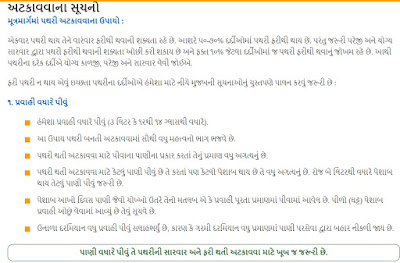Stone Disease Stone Types Stone Remedies superb video by Nagjibhai Asodariya
Table of Contents
However, if the body does not get enough water, it cannot dilute uric acid. Which causes more acid to go into the urine. Which causes stones to form in the kidneys.
Kidney stones form in the kidneys. It is usually advisable to drink more water after a stone problem. But even if you keep this diet in eating and drinking, you will necessarily get relief from this pain of stones.
A balanced diet plays a very important role in the kidney stone problems. Eat less salt with more water. Eating less salty foods will help. Sodium causes the body to get more calcium. Which can also cause kidney stones. In addition, do not eat processed and tinned junk food. Doing so will only aggravate the problem.
In addition, avoid overdosing on vitamin C. Do not take more than 500 mg of vitamin C. Don’t clean things like cold drinks, alcohol. Phosphate can cause more stones in cold drinks.
Avoid foods made from soy protein. Don’t even tell the guardian to stone. Because spinach contains oxalic acid. Which can worsen the condition of your kidneys. Also, avoid eating too much salt. Also, don’t stop the bathroom too often. Do not block the bathroom if you have to go to the bathroom more often after drinking more water. If you pay so much attention, the pain in the stone will be relieved. Also, seek proper medical advice.
Calculus is an important kidney disease seen in many patients. Stones can cause excruciating pain but many patients do not have any discomfort despite having stones.
In some patients, stones can lead to urinary tract infections and kidney damage if not treated in time. It is very common to have stones once and for all. So it is important to know about stones and how to prevent them.
What is a stone?
Calcium oxalate or crystals in the urine combine to form a hard substance in the urethra, in the long run, known as stones.
What are stones like? What does it look like? Where is it found in the urethra?
Stones in the urethra vary in size, from as small as a grain of sand to as large as a ball. Some stones are round or oval and smooth on the outside. This type of stone is less painful and can be easily excreted in the urine.
Some stones are rough, can cause excruciating pain, and are not easily excreted in the urine.
Stones are found mainly in the kidneys, ureters or bladder, and sometimes in the urethra as well.
What are the types of kidney stones?
There are four types of kidney stones:
1. Calcium Stones:
This type of stone is most common in patients with stones (approximately 30-40%). The cause of calcium stones is calcium oxalate in more patients and calcium phosphate in fewer patients.
. Struvite Stones:
Struvite (magnesium ammonium phosphate) stones: Found in about 10-15% of patients with stones. This type of stone causes infections in the urine and kidneys. This type of stone is more common in women.
. Uric Acid Stones:
Uric acid stones are very rare (approximately 8-10%) in patients with gallstones. There is a risk of developing these types of stones when the uric acid level in the urine is high and the urine is constantly acidic. The risk of developing gallstones is higher after gout, a non-vegetarian diet, low body fluids, and some cancer medications. Uric acid stones are not visible on the X-ray examination as they are not transparent.


. Cystine Stones:
This type of stone is very rare and is only seen in some patients with hereditary cystinuria. Excess cystine in the urine is called cystinuria.
What is a Staghorn Stone?
This type of stone is a very large struvite type of stone, which is spread throughout the kidneys. This stone is called Stag = deer horn because it looks like a deer’s horn. The diagnosis of this type of stone is very late in most patients, as the pain in this type of stone is very low or not at all. This type of stone is large in size but the pain is negligible and can cause severe damage to the kidneys.
Stone Disease Stone Types Stone Remedies superb video by Nagjibhai Asodariya
